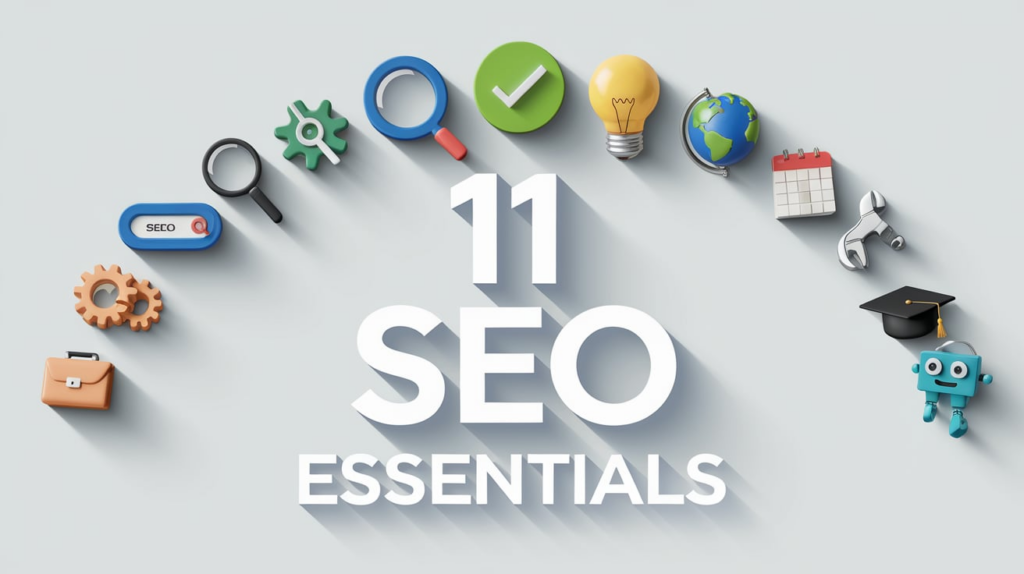
Tracking the right SEO metrics isn’t just a good idea—it’s essential for staying ahead in the ever-evolving digital landscape. By monitoring both technical and on-page elements and using the right tools, you can streamline your efforts and ensure impactful results.
While tools like Screaming Frog and Looker Studio integrations are great for visibility, the real question is: are your efforts moving the needle? Managing dozens—or even hundreds—of sites requires targeted tracking to ensure each tweak delivers actionable insights.
Here’s your roadmap to tracking what truly matters in SEO, from indexability to on-page factors, and the tools that make it a breeze.
Indexability Matters Most

Indexability is the backbone of your SEO strategy. If search engines can’t crawl or index your pages, even the best optimization is wasted effort.
- Robots.txt Updates
The robots.txt file dictates how search engines crawl your site. Accidental changes—like those that sometimes happen when moving a site from staging to production—can block search engines entirely.- Why it’s important: A misconfigured robots.txt can tank your SEO efforts overnight.
- What to use: Tools like LittleWarden and Visualping can monitor robots.txt changes and send immediate alerts when something goes wrong.
For more information on managing robots.txt effectively, read our blog.
- Noindex Robots Tags
The noindex tag is a crucial directive to manage which pages search engines should exclude. Misuse can mean critical pages go invisible or clutter your search results with unnecessary pages.- Why it’s important: Keeps your index clean and focused on high-value pages.
- What to use: LittleWarden or Screaming Frog allow you to track and customize settings to ensure your priorities are reflected in search engine results.
- X-Robots-Tag Adjustments
Similar to the noindex tag but found in HTTP headers, the X-Robots-Tag provides another layer of indexation control.- Why it’s important: It ensures directives are respected even if meta tags are overlooked.
- What to use: Pre-configured tools like LittleWarden simplify monitoring for changes to these headers.
- XML Sitemap Accuracy
XML sitemaps help search engines discover and prioritize your content. Errors in your sitemap, like incorrect URLs or parsing issues, can cause crawling issues.- Why it’s important: Keeps Google informed about your site’s structure and updates.
- What to use: LittleWarden can validate your sitemap and track changes to maintain accuracy.
- Canonical Tag Changes
Canonical tags signal the preferred version of a page to search engines, preventing duplicate content issues. However, incorrect or unintended changes can confuse search engines.- Why it’s important: Protects your content’s authority and prevents dilution of rankings.
- What to use: Tools like VisualPing, ChangeTower, or Screaming Frog can track and alert you to changes.
On-Page Optimization: Safeguard What Drives Rankings

On-page SEO ensures that the content and structure of your website support your ranking goals. When overlooked, even minor changes can derail your strategy.
- Heading Tag Adjustments
Heading tags (<h1>, <h2>, etc.) provide structure to your content and are critical for both accessibility and SEO.- Why it’s important: Clear, optimized headings improve readability and potentially rankings.
- What to use: Tools like LittleWarden, Wachete, and ChangeTower can monitor heading changes on your priority pages.
- Internal Linking Updates
Internal links create pathways for both users and search engines, distributing authority across your site.- Why it’s important: Changes to links or anchor text can weaken your internal link graph.
- What to use: Use LittleWarden or Visualping to ensure your link structure remains consistent.
- Keyword Usage
Keywords still play a vital role in SEO. Unintended changes to your keyword-focused content can hurt rankings.- Why it’s important: Preserves content relevance and ensures your target keywords are intact.
- What to use: Tools like LittleWarden and Versionista allow you to monitor keyword-related content updates.
SERP Visibility: Optimize for Clicks, Not Just Rankings

How your site appears in the search engine results page (SERP) can significantly impact your click-through rate (CTR), regardless of your ranking position.
- Title Tag Changes
Title tags are your first impression in the SERP. While Google sometimes modifies them, having a strong, optimized title is still essential.- Why it’s important: Increases CTR and aligns your content with user intent.
- What to use: LittleWarden, ChangeTower, or Wachete make tracking title tag changes straightforward.
- Meta Description Updates
While meta descriptions don’t directly impact rankings, they are vital for persuading users to click.
- Why it’s important: Crafting compelling descriptions can boost traffic.
- What to use: Tools like Visualping and ChangeTower allow you to track edits to this critical element.
- Schema Validation
Schema markup provides structured data that enhances your SERP features, such as rich snippets.
- Why it’s important: Helps search engines better understand your content and improves visibility through SERP enhancements.
- What to use: Tools like LittleWarden and Versionista track changes to your schema implementation.
Happy Tracking = SEO Success
With this detailed checklist, you can proactively monitor the SEO elements that matter most and ensure your strategy stays on track. Remember, in SEO, it’s always better to prevent issues than to fix them after rankings drop.
Ready to take your SEO to the next level?
At 42Works, we specialize in driving measurable SEO results with tailored strategies and cutting-edge tools. Let’s transform your digital presence—get in touch today! 🚀
FAQs: Mastering SEO Tracking
1. Why is tracking SEO elements important?
Tracking helps you prevent ranking drops and ensures your SEO efforts are focused on what drives results.
2. What is the most critical SEO element to monitor?
Indexability should be your top priority; without it, search engines can’t crawl or rank your site.
3. What tools are best for monitoring technical SEO?
LittleWarden, Visualping, Screaming Frog, and ChangeTower are highly effective for tracking various SEO elements.
4. How often should I monitor changes to my site?
Daily monitoring is ideal for critical pages, but hourly checks may be necessary for high-priority campaigns.
5. Do title tags and meta descriptions directly affect rankings?
No, but they significantly impact click-through rates (CTR), which can indirectly influence your traffic and performance.
6. How can 42Works improve my SEO tracking?
We provide customized solutions, expert insights, and robust strategies to optimize your SEO performance effectively.


